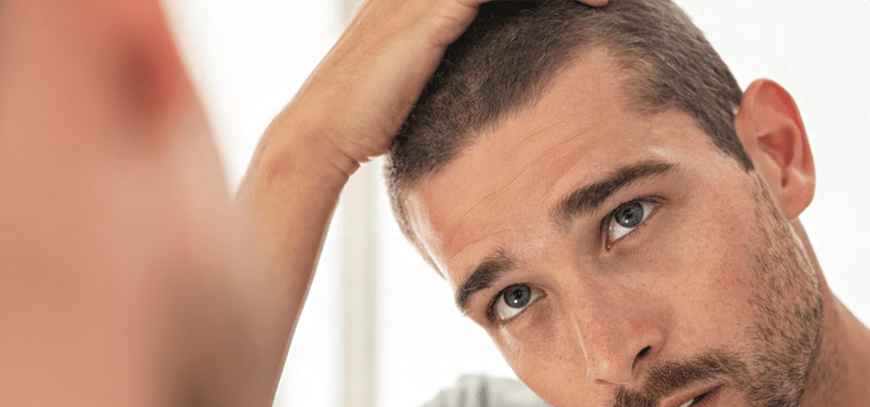Working Time
- Mon-Sat 10:00 – 19:00
Contact Info
-
+90 542 512 51 64
Ask the Experts
Hair Restoration

A good hair transplant result is undetectable not only to another viewer but even to another hair-transplant surgeon. There are many reasons for a hair transplant to look unnatural and require a corrective procedure. Sometimes, it can be due to the use of old technology, progression of hair loss, or poor technique. For example, large round “plugs”, scalp reductions, and/or flaps were the procedure of choice in the past but with the progression of hair loss their results became unnatural. Sometimes the transplanted area looks unnatural and sometimes the donor area is left with wide scars and at times unnatural hair patterns that may be difficult to correct. Even though plugs and large reductions may not be performed anymore, the results of hair transplants can still look unnatural.
Common mistakes associated with hair transplants
With hair restoration becoming more and more popular, many surgeons and medical practices seek ways to capitalize on this revenue stream – even ones who may not have the experience or skills required to successfully perform hair transplants. In other cases, hair restoration clinics may perform hair transplants using a rotating staff of surgeons and support teams, rather than using one surgical team to perform the surgery from start to finish. Common mistakes include unskilled removal of hair follicles from the donor site, which can result in scarring or uneven patches, and unnatural or unsuitable placement of the hair grafts. In some cases, grafts are placed so poorly that new hair growth does not occur.
When it comes to hair restoration surgery, the best results are achieved when a highly skilled and experienced hair restoration surgeon performs the surgery from start to finish. This helps prevent errors when the hair grafts are harvested from the donor site and when they are transplanted to their new location. Unfortunately, some surgeries are still done with little experience and poor technical expertise. The result of an hair transplant through these clinics can thus be very disappointing. Therefore, it is always important to not only focus on the price, but also on the skills and expertise of the medical team. Natural and aesthetically pleasing outcome depends upon a surgeon’s ability to reproduce the patient’s natural hairline.
The Procedure
Thanks to many years of experience performing hair transplants, our surgeons are able to easily identify what has gone wrong during a primary hair transplant. They then create a plan to correct these mistakes so they can craft a more natural outcome for the patient. Once the errors have been identified and a plan created, the corrective hair transplant is performed similarly to any other hair transplant performed by our surgeons.
- The first step involves harvesting hair grafts from the donor site. One ofour surgeons will take special care to preserve the integrity of the scalp in the donor area and, if necessary, will work to address any scarring that occurred during the primary hair transplant. Harvesting is usually done using Follicular Unit Excision technique. The final approach used will depend upon the patient’s unique needs and the condition of the donor site.
- Next the hair grafts are carefully prepared for transplantation.
- Finally the hair grafts are individually placed in the recipient site, with special attention given to the angle of placement, density, pattern and hairline shape.
Our surgeons and their respective medical teams manage the entire process from start to finish, helping to ensure a more consistent, natural result.
- Men who have unnatural results from a hair transplant or flap-rotation procedure
- Women who have unnatural results from a hair transplant or hairline-lowering procedure
- Contact our online consultants on Whatsapp number +90542 512 51 64 and schedule your procedure and plan on one week for recovery during which time you are functional but may not be socially presentable for several days.
- If your plan for restoration includes beard harvesting, avoid shaving for 48 hours prior to the procedure. It is important to keep your beard at a specific length (no longer than 1 to 2 mm or a 2 day growth).
- If you color your hair regularly, you are recommended to color it 2 to 3 days prior to your procedure. You will be allowed to recolor it 2 weeks after the procedure.
- Since you are flying in from abroad, you will be required to arrive the day before the procedure and will be allowed to travel the day after, staying in Antalya for a total of two nights.
- You can wear a hat after the procedure, and you can wash your hair 24 hours after and travel the next day.
- Transplanted hairs should start growing as early as 3 to 4 months post-procedure (but may not have any substantial growth for a few months after that period) and should improve in growth up to 12 months post-procedure or longer.
- Corrective surgeries can be done in stages or your restoration design may include a second procedure. Depending on hair growth and the area that needs to be restored, you may plan your second procedure as early as 6 months afterward and ideally 10 to 12 months after your first procedure.
